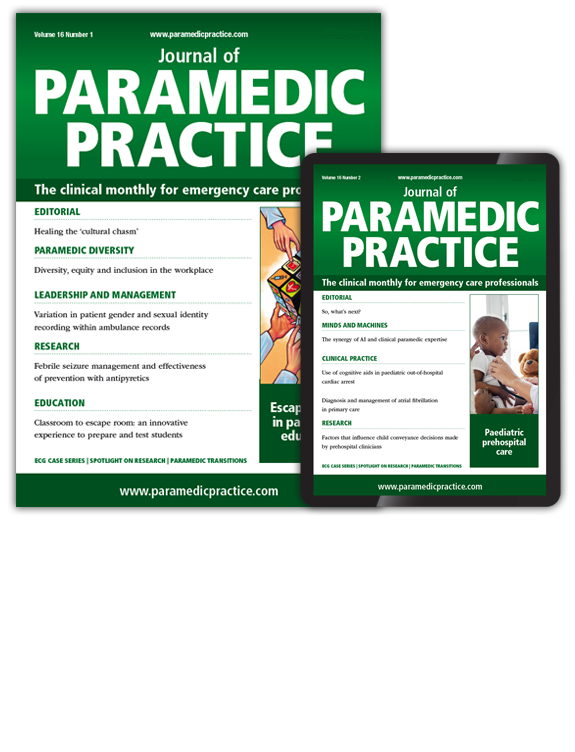Journal of Paramedic Practice (JPP) is the peer-reviewed journal dedicated to best practice in pre-hospital care. It provides the information paramedics need to meet their CPD requirements and improve outcomes for patients.

Our reflective modules are drawn from our clinical archive and include certification, to test your knowledge and fulfil your CPD requirements.
Journal of Paramedic Practice (JPP) is published every month and provides an archive of previous issues dating back to 2010.
Sign up for Journal of Paramedic Practice’s regular newsletter and stay up-to-date with the latest content that we publish.
Complete your required CPD activity with our reflective platform
In the United States, there are four recognised levels of college degrees: two are considered undergraduate, and two graduate. The first undergraduate level is the associate degree, which is generally...
Access our full range of content and never miss an issue
Journal of Paramedic Practice supports paramedics by providing an evidence base for clinical practice and a platform for continuing professional development.
Clinical best practice
Original research
Paramedic education
Reflective CPD